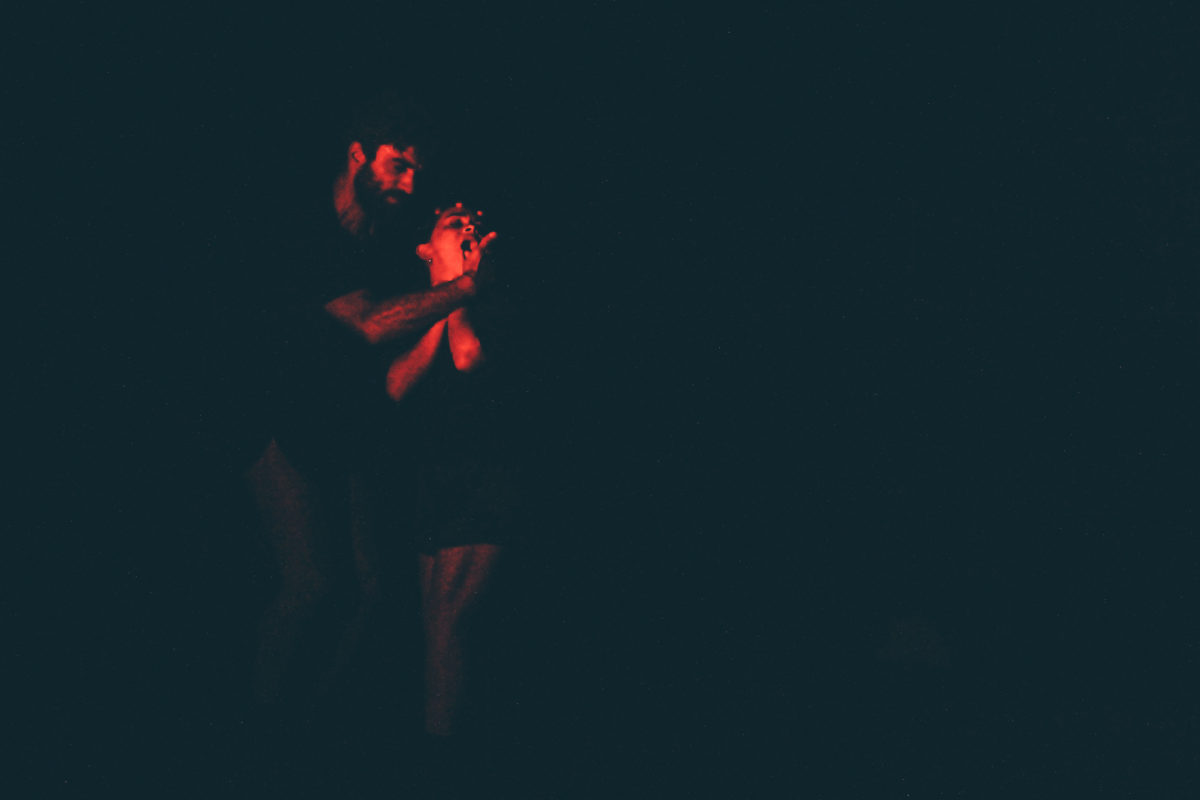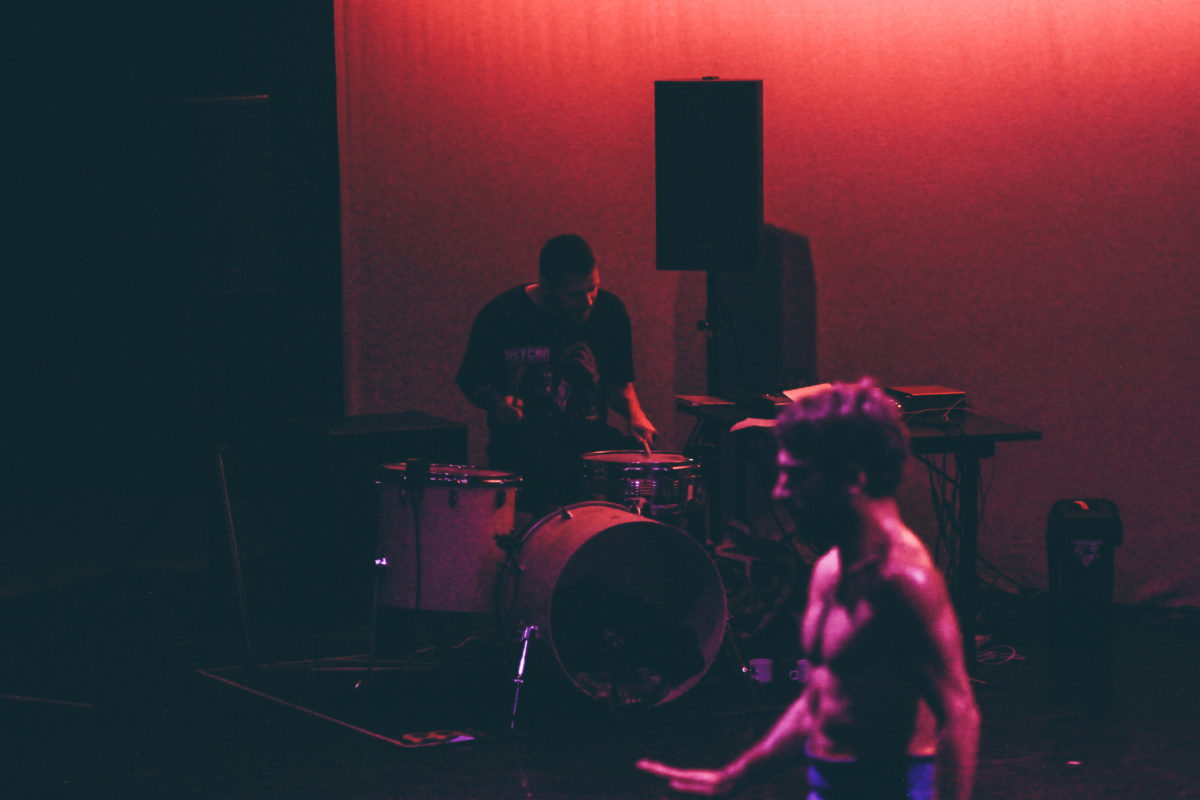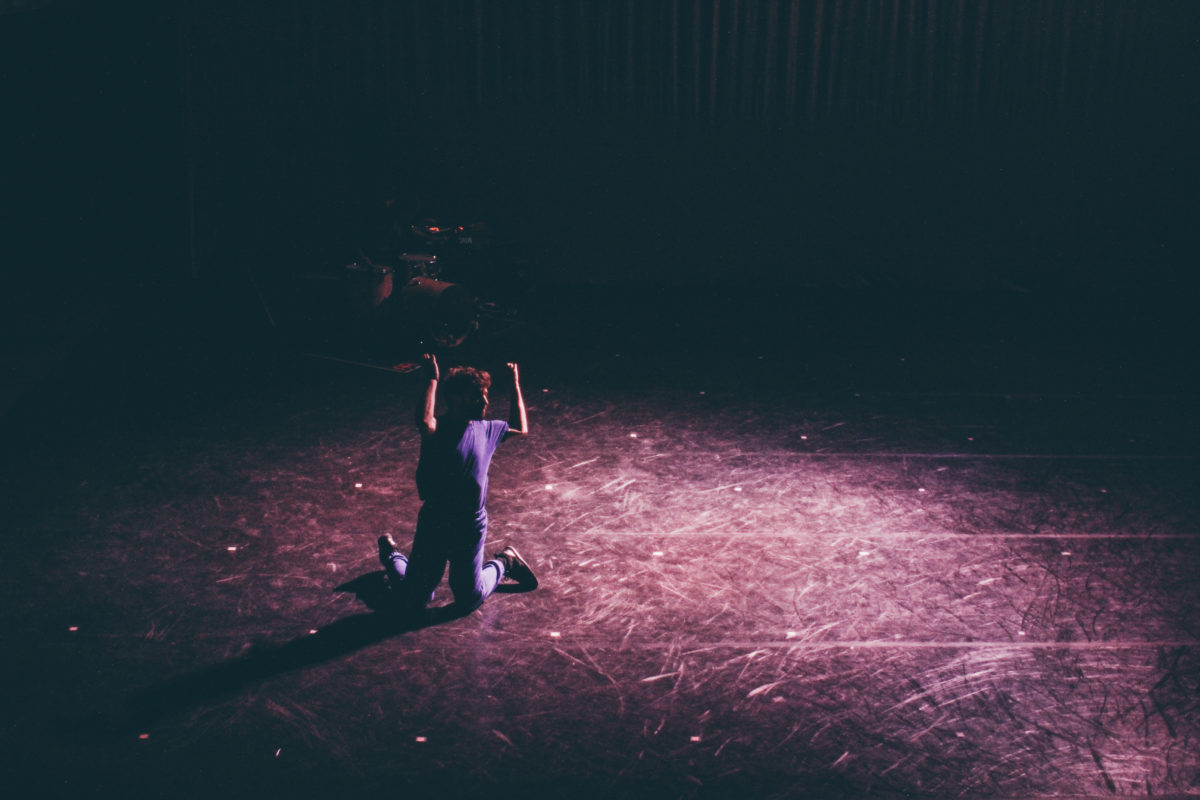Choreographer Jan Martens & Drummer NAH On Their New Collaboration
By Something CuratedChoreographer Jan Martens latest work RULE OF THREE premieres this evening, 19 October, at the Lilian Baylis Studio, Sadler’s Wells. The show positions itself as a danced performance, sitting somewhere between a concert and a short story. Martens aims to recreate the atmosphere of a nightclub combined with the feeling of getting lost in the pages of a book. For the first time the dance-maker will work with live music, provided by American drummer NAH. NAH produces anxiety-laden tracks and sound collages with firm roots planted in DIY punk, noise, avant-jazz, and the restlessness of hip-hop, blending live and programmed drums with off-kilter sequenced elements. In the run up to the production’s UK premiere, Something Curated caught up with the duo to learn more.

Something Curated: Could you tell us about your respective journeys into the fields of dance and music?
Jan Martens: As a 17 year old growing up in Belgium I saw performances by Jan Fabre and Rosas (the company of the choreographer and dancer Anne Teresa De Keersmaeker), which left a big impression on me. I started to research ‘contemporary dance’, and discovered it was a profession and one you could make a living out of. At that time I started going out as well, and noticed I really enjoyed dancing repetitively. I started taking courses, and later followed a professional education In Tilburg and Antwerp to be come a professional dancer.
After graduation in 2006 I took up work as a dancer, and started choreographing in 2010 to create my own possibilities, as a lot of the works I saw in theatres were very aesthetic and left me bored and untriggered. Since creating my own works I really try to make diverse pieces, however, the human being always stands central. My work is touring internationally, and we had the pleasure to present previous works in London at The Place and during Dance Umbrella, but it’s the first time we’re at Sadler’s Wells.
NAH: I dropped out of art school in 2005 and continued making sounds and touring with various musical projects. I began creating sounds under the name NAH in 2011 and am still doing that.
SC: What was the thinking behind Rule of Three; could you tell us about what influenced you and what you aim to achieve with the project?
JM: For RULE OF THREE I wanted to research and translate the short concentration span we have nowadays, and our capability to jump from one atmosphere to another. We click from a cute cat video, to a tragic news item, to a funny disaster video, to a presidential tweet and our brain is all processing that so quickly. It’s great our brain can all digest this (or can it?) but sometimes I feel it brings us and society into a very scattered and fragmented way of living. The performance is like a Facebook wall, going fast through very different items without any logical connection, except for the fact that they are all coming from the same place.

One of the aims is to make an audience reflect on that, on the way that technologic information is taking over, but also about how we as humans connect: where has the physicality gone? It’s easier to meet on an app than in real life. One big inspiration was the work of writer Lydia Davis. She’s mostly known for her short stories, which can be very short indeed: only a few sentences. I love the way she works with narrative but also how much she leaves open for the reader to fill in. In that way her work is really participatory: it demands something from the reader. The way she can contrast so many different atmospheres in all of her stories but make them have one clear signature, I think it’s really brilliant. And of course the music inspired me a lot as well. I bumped into NAH’s work on a music blog and fell in love immediately. For me it has something which really reflects right now. It’s jumpy, repetitive, violent, at times saturated by it, and it is made of many different layers and inspirations.
NAH: Nothing outside my ordinary realm of influence aided in the creation of these sounds, I just let my mind run free. My approach was to treat each scene as a film piece and to create accordingly. Sometimes the movements would influence the sounds and sometimes the opposite. Not that wild I suppose. Achievement wise, it was simply a new creative experience for me, one that I am still adjusting to.
SC: Could you give us some insight into the collaborative working process between the two of you?
JM: NAH was there the whole process. Which gave us the time to build slowly to what the show in the end became. NAH works very fast: he could see in a glimpse of a movement section what the vibe was, and would proposed a track or rhythm section which brought me again further in fine-tuning the choreography. I would say it was a constant negotiating, but in a good way: my movement proposals influenced his work, which influenced again the way the choreographic material would develop and so on.

NAH: Well, this was each our first time working with another artist in this manner and to me, it was a bit of a blur. Basically I think movements or scenes were presented to me and I created whatever sounds I felt fit the part. No real struggle there. The hardest part was fine-tuning the transitions. Figuring out which scene would work after the next and in what order. Almost like putting an album together.
SC: How does your work question performance’s relationship with the audience?
JM: In my work I always built from the perspective of the audience. This is because before I started creating and dancing I was a spectator first. I think in the case of RULE OF THREE the relationship with the spectator is very complex and double; there is no logic, and our brain wants to connect different scenes, but they do not, and that can bring a struggle. On the other hand: there is so much diversity in the show, I think it is the most spectacular show I’ve ever made, very dense with music and light and movement. It’s a dynamic show, very short scenes and very long ones, light and dark … it really is built on contrasts.
NAH: Well in regards to my work within this piece, I would say it’s an equal balance of alienating and inviting the audience. There are many scenes within this piece. Some very beautiful and calming sounds can be at play and then suddenly a terrifying crack of a snare drum or car alarm sounds will blast the audience. I’m not very familiar with a dance or theatre audience, so sound wise I’m just sticking to my modus operandi here. Give and take. Destroy and rebuild.

SC: What do you find is unique about London’s on-stage offering?
JM: The diversity and scale of it. The way all these different genres live next to each other in a city and the fact that contemporary dance is still a respected art form and that it is part of daily lives.
NAH: Performing as NAH, I’m generally used to more underground club settings or DIY venues. I’ve been performing all over London and the UK for several years now. I’m always impressed, surprised and pleased by the cultural diversity at the gigs and general yearning for new sounds. I’m looking forward to experiencing a different kind of performance environment.
SC: What does it mean to you to be working with Sadler’s Wells?
JM: It means a lot. It brings visibility to my work. I really like the work that Eva Martinez (Artistic Programmer of the Lilian Baylis Studio and Artist Development at Sadler’s Wells) does and what she brings to the art form. She has followed my work for a long time, and I am very happy she is now introducing my work to her audience. In the future I will make bigger scale works, and in that sense Sadler’s Wells could of course be a good partner.
NAH: Well, again culturally, this isn’t a place I would normally be performing in. So I find it interesting to bring a bit of my world to a more prestigious setting. Almost as if my shoes are muddying up the nice carpet. Maybe they’ll leave the dirt there for a little bit?
RULE OF THREE | 19 & 20 Oct – Lilian Baylis Studio, Rosebery Avenue, London, EC1R
Images: © Joeri Thiry, STUK – Huis voor Dans, Beeld & Geluid (Courtesy of Sadler’s Wells)